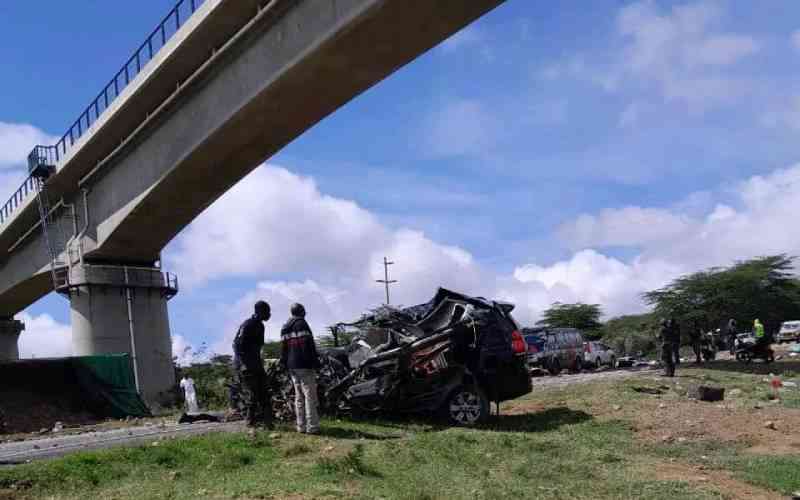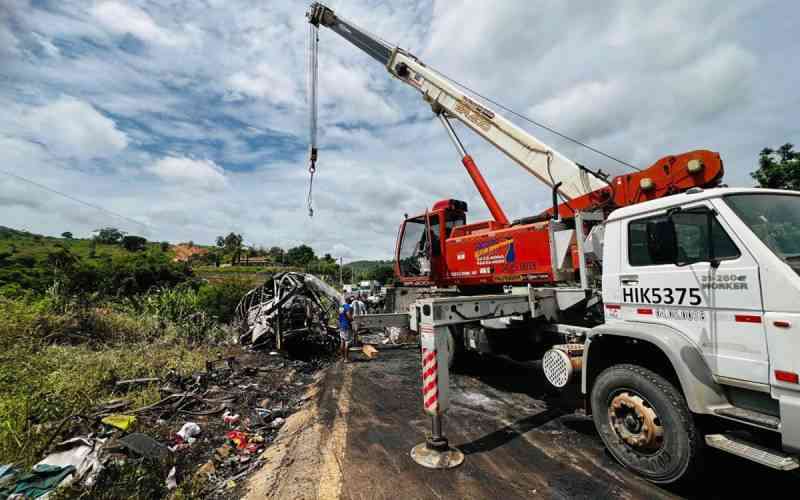By DANN OKOTH
Nairobi, Kenya: It is a chilly Sunday night and Kenyatta National Hospital’s (KNH) emergency wing is as chaotic as it gets. On any given day, the accidents and emergency section would be teeming with people, mostly patients and their relatives, but tonight it is a deluge of humanity.
On the second night of a two-night undercover vigil at the facility, I arrive at KNH to witness first-hand how the largest referral facility in East and Central Africa copes with such a high patient turnout in the face of diminishing resources, including personnel and equipment.
I did not have to wait for long to be surprised or even shocked. It is 10.30pm and the emergency unit, which had been nearly idle for the best part of the early evening, suddenly experiences a surge in patients — at least 25 every half hour and in all manner of conditions.
The sudden increase in patient numbers, I am told, is not unusual especially on a weekend like this.
They are mostly victims of drunken driving, illicit brew consumption, domestic violence and muggings. But there is the occasional victim of a heart attack, severe diarrhoea, botched abortion and rape.
There are only two doctors to handle close to 300 patients. One is a surgeon and the other is a general practitioner. The standard requirement is for seven doctors to be present at the unit at any given time of the day or night— at least three of them specialists.
Much as the two doctors on duty are doing their best to treat as many patients as possible in the shortest time possible, their efforts count for little, as the queue gets longer. Besides, there are only a handful of nurses and other support staff for the night shift, making a bad situation worse.
What follows is drama and chaos as the unit’s staff, including doctors, nurses and support staff appear overwhelmed. The sick and their handlers push, jostle and shove in dramatic scenes reminiscent of a war-zone.
The weaker patients and their handlers are at a clear disadvantage. “At times there are up to three or four doctors to man the unit but that is the best we have ever managed,” says a records clerk at the unit.
“On such occasions we are able to cope with the numbers of patients. In a worst case scenario there could be one doctor to man the whole unit especially in the wee hours of the morning,” adds the clerk, who cannot be named because he is not authorised to speak on behalf of the hospital.
At midnight, things appear to get out of hand. Even triage, the process of prioritising sick or injured people according to the seriousness of the condition or injury, is ignored as good order breaks down and chaos and confusion rein.
A man arrives on a motorbike bleeding profusely. He is a victim of slum violence, I learn. But he will have to wait in line as the rest to get treatment.
He has lost a lot of blood and appears to slip into and out of consciousness. He cannot sit and must lie down but the benches, which number just about ten, are all occupied. He is forced to lie on the cold floor.
The man who brought him on a motorbike is not his relative but a Good Samaritan who picked him up by the wayside and now needs to leave to continue his business.
Stay informed. Subscribe to our newsletter
Without anyone to push his case the man would probably not get treatment until the following day or at worse die while waiting. It is now 2am and patients and their minders who were grappling to get treatment have more or less resigned to their fate.
Most are now slumped on the benches or sprawled on the cold floor, perhaps too sick or tired to try. Some have since left without getting treatment.
I retreat to the far corner of the unit near where a man has been abandoned on a stretcher to escape the biting cold but my hopes of catching a quick nap are dashed by groans of the man who earlier lay still as if he were dead. He kicks his feet and throws his arms about, apparently under severe pain.
I drag myself back to the general waiting area, walking carefully to avoid stepping on people lying about and blood, vomit and urine splattered all over the floor.
A mother holding a convulsing child emerges from a dark corridor along the hallway. She pleads with a nurse to save her daughter’s life. She had swallowed an object, the distraught mother tells the staff.
The nurse snatches the baby from the woman’s hands and disappears with her behind a green curtain. After an hour, she returns with the baby who appears to be fine and asleep. But such quick fixes are rare, as patients have to brave many hours of waiting before getting treatment.
It almost 3.30am and a few patients who have been seen by the doctors and should transition to the Intensive Care Unit are stranded at the emergency apparently because there is no more space there.
“They will have to wait till tomorrow to know whether they can be admitted,” a nurse who has been in the unit since 5pm last evening tells me. Only the acute cases will be given priority otherwise the rest will make do with a place in the ordinary wards. It is difficult but what choice do we have when we are constrained for space and other facilities,” she asks, frustration written all over her face.
Yet the situation at KNH could get better since they have the best-trained doctors. The nurses and other support staff are also said to be well paid. So how come there is always a crisis at the emergency unit?
An employee tells me it is a lingering problem that has ‘simply refused to go away’, adding that the situation can sometimes get so bad that a single doctor would be left to tend to patients in the entire unit.
“I do not quite understand it especially after the hospital introduced a locum system where doctors can stand in for their absent or tired colleagues for extra pay. At first the system worked very well and at no time would the emergency or ICU be without three or more doctors. It could be fatigue or the sheer rigour of the job that one decides even such incentives like extra cash is not worth it,” explains the employee, who has worked at the unit for 20 years.
The other problem is that the doctors are not necessarily stationed at the facility. They are doctors on call; especially the surgeons and they are only summoned whenever there is an emergency.
However, it takes anything between 45 minutes to two hours before one can arrive to attend to a case but that could mean the difference between life and death for a patient.
In an earlier vigil by The Standard at the facility, a surgeon arrived three hours after he had been called to attend to an accident victim who had deep cuts on his head, apparently because he was engaged in another procedure at a different hospital.
A nurse confides in me that the hospital cannot afford to tie the doctors down, especially the specialists, due to the high fees they would demand.
Permanent job
“Come to think of it, how many such specialists like neurosurgeons and cardiologists do we have in this country and would an institution like KNH hold down to a permanent job,” she poses.
But the glaring shortage of doctors and other support staff could be a recipe for disaster because it could lead to the best-trained medical personnel making grave mistakes that could cost lives.
“With this kind of workload anyone can make a mistake. The toll on the staff is telling and mistakes have been done before that cost lives and they could be repeated again and again if something is not done,” says the nurse.
It is now 5.30am and even I begin to feel the effect of long hours of standing and pacing around the facility. I am about to leave the unit to go and pick a taxi, but wait, I thought of the patient on the stretcher and dash to the corner where I left him writhing in pain.
He lies still like a log. I touch him, but he does not move. Is he dead? Is he alive?
[email protected]
 The Standard Group Plc is a
multi-media organization with investments in media platforms spanning newspaper
print operations, television, radio broadcasting, digital and online services. The
Standard Group is recognized as a leading multi-media house in Kenya with a key
influence in matters of national and international interest.
The Standard Group Plc is a
multi-media organization with investments in media platforms spanning newspaper
print operations, television, radio broadcasting, digital and online services. The
Standard Group is recognized as a leading multi-media house in Kenya with a key
influence in matters of national and international interest.
 The Standard Group Plc is a
multi-media organization with investments in media platforms spanning newspaper
print operations, television, radio broadcasting, digital and online services. The
Standard Group is recognized as a leading multi-media house in Kenya with a key
influence in matters of national and international interest.
The Standard Group Plc is a
multi-media organization with investments in media platforms spanning newspaper
print operations, television, radio broadcasting, digital and online services. The
Standard Group is recognized as a leading multi-media house in Kenya with a key
influence in matters of national and international interest.








